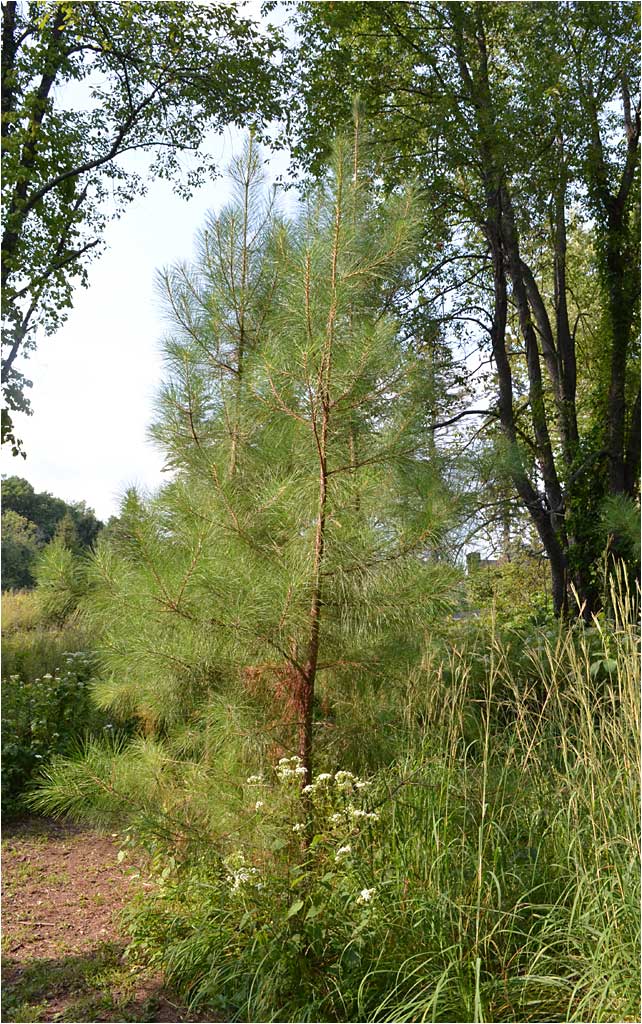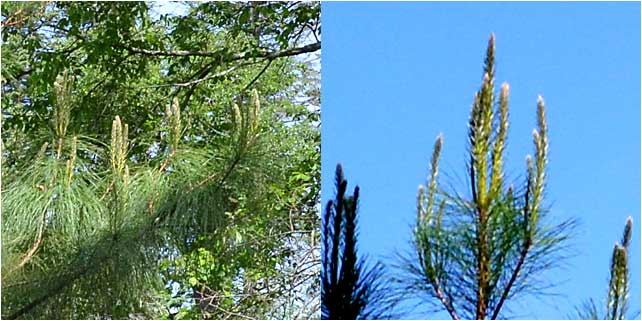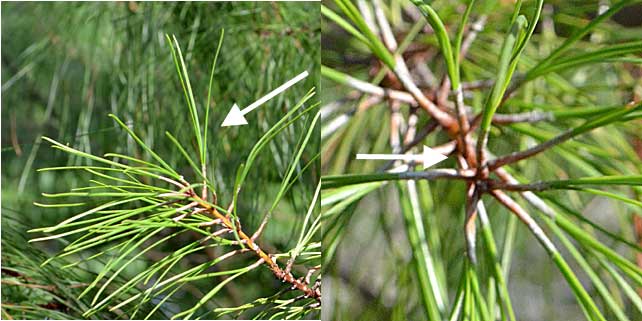47. LOBLOLLY PINE, Pinus taeda

Three Loblolly Pine trees were planted by Douglas Jackson (Westmoor Park Naturalist/Manager) in 2017. For the first several years (while growing their root structures) they appeared to struggle. But in the last two years, and particularly 2023, they are growing rapidly. Pinus taeda is one of the fastest growing southern pines in their natural range. In CT, we are slightly north of typical range, but these were planted at the Arboretum in anticipation of future climate warming.
The Loblolly Pine is the most common pine in the United States.
SPRING, NEW GROWTH

Loblollies may grow more than 24" (2 ft.) per year, and the last year at Westmoor has certainly documented that growth. We are now measuring and will report back. The trees, like most pines, is a monecious conifer (M/F cones on same tree) but are not expected to begin to bear cones until their tenth year. Getting close.
LOBLOLLY NEEDLES, CLOSE-UP

Loblolly needles are attached to the tree by a suction-cup looking organ called a fasicle (right). From that point, groups of 3 needles emerge (left). The needles are quite long, even in these immature Loblollies, and an important point in the ID of different Pine tree species.
4 SEASON, BARK

The bark of young Loblolly pines is furrowed and "hairy" while the bark of mature trees is thick and deeply plated for fire resistance. The long wisps you see on the trunk now are remnants of old needles which grew on the trunk when young.
WINTER

While Loblollies are evergreen and do not change much from season to season, it is easier to measure growth in the colder months as the perennial grasses around the trees die back each year.